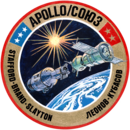Subproject 1: The Apollo-Soyuz Test Project (ASTP): East-West Cooperation despite System Competition (1970s)
- Principal Investigator: Prof. Dr. Martin Schulze Wessel
- Researcher: Dr. Darina Volf
The successful docking maneuver of an Apollo and a Soyuz spaceship on July 17, 1975 was a historic event. The two space-faring nations, the USA and the USSR, completed their most ambitious cooperation project. The Apollo-Soyuz Test Project (ASTP) raised many hopes and expectations, as it intended to establish a lasting scientific and technical cooperation and was considered a political symbol of the policy of détente.
The project analyses the difficult negotiation processes, which preceded the cooperation. Firstly, it focuses on the actors, who, because of their various interests and motivation, intensified, negotiated, legitimised, questioned and hindered collaboration with the political opponent and the main competitor in science, technology and economy. Secondly, the project examines the actual arrangements of the cooperation, the involved actors’ perceptions and expectations as well as the epistemic effects of the ASTP. Thirdly, the images of the self and others, which were publicly disseminated in the course of the successful American-Soviet cooperation, are analysed and compared. A fourth aim of the project is to evaluate the conditions that enable the continuation of scientific cooperation. While some joint projects launched under the ASTP came to an end with the worsening of the political conditions in the second half of the 1970s, other cooperation initiatives have continued successfully (for instance in the field of space biology and medicine) despite the unfavorable political climate.

Source: wikimedia

